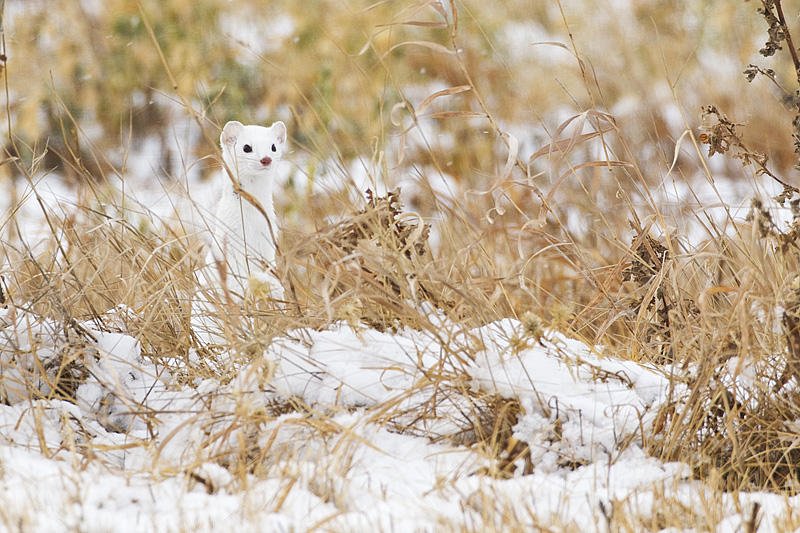Long-Tailed Weasel (Mustela frenata)
Also known as big stoat or masked ermine, long-tailed weasels are small, cute, and fuzzy. However, don’t let their small size fool you as they can be very aggressive. Although they are most active during the night, you can also see them during the day.
Photo by Gerald Romanchuk
Why they Matter to Us
Long-tailed weasels help regulate rabbit and rodent populations.
How You Can Help
Support protected areas in the Edmonton region (such as EALT!). You can donate or volunteer your time to help with conservation efforts.
How to Identify
Identify by Sight
Photo by Gerald Romanchuk
Long-tailed weasels have a long body and neck with short legs. In summer, their fur is typically brown with a white or slightly yellow belly fur and black tail tip. In winter, their fur turns white. Adults are typically between 28 and 42 cm long, and weigh between 80 and 450 grams.
Identify by Sound
Long-tailed weasels communicate using sounds such as squeals, squeaks, trills, and purrs. They may be especially vocal in response to a disturbance.
Where to Find
Photo by Gerald Romanchuk
Long-tailed weasels are found throughout southwestern Canada, the United States and Mexico, and extend to Central America and Northern South America. They are found in tropical, arid, temperate, and cold climates and inhabit small wooded areas, thickets, open areas, and farmland. They usually live near a water source.
Long-tailed weasels nest in rock piles, hollow logs, and under barns. They may take over the burrows of their prey, rather than create a new burrow themselves.
Photo by Gerald Romanchuk
Social Life
Long-tailed weasels are generally solitary outside of mating season and use sight, sound, and scent to communicate with each other. They are highly territorial and are very aggressive towards intruders.
Mating typically occurs mid-summer, and the young are born from late April to early May. The young, called pups or kits, nurse until they are 36 days old at which point they wean and begin to eat food hunted by their mother. They learn to hunt from their mother and can kill their own prey at 56 days old. Most young will disperse from their mothers when they are 7-8 weeks old.
Food Chain
Long-tailed weasels are carnivores and primarily feed on small mammals, but they can also eat birds, reptiles, and insects. They may also consume fruits and berries.
Predators of long-tailed weasels include owls and coyotes. The young are especially vulnerable to predators, while the more aggressive adults can intimidate much larger animals.
Photo by Gerald Romanchuk
Fun Facts
Long-tailed weasels have the largest distribution of any weasel in the Western Hemisphere.
Long-tailed weasels have a top speed of 25 km/h, and are good swimmers and climbers.
A group of long-tailed weasels is called a gang, colony, pack, or sneak.
They may eat up to 40% of their body weight every day to support their high metabolic rate.





